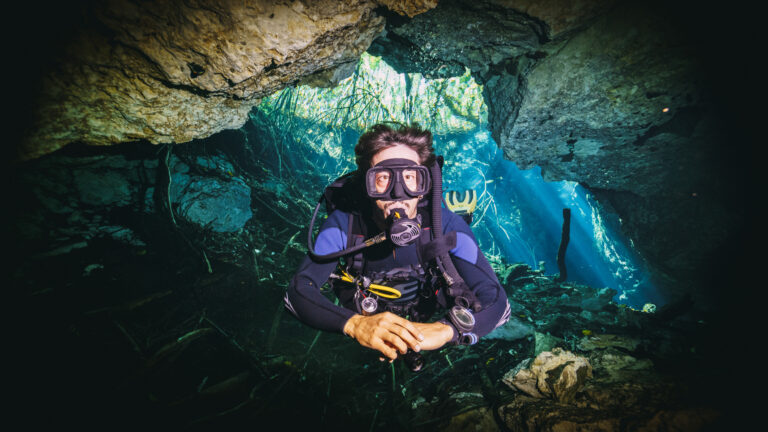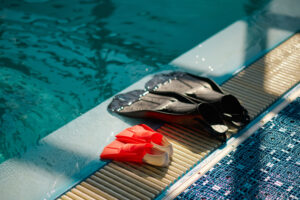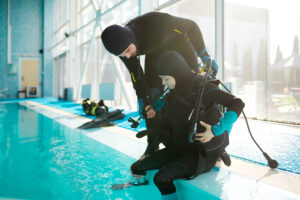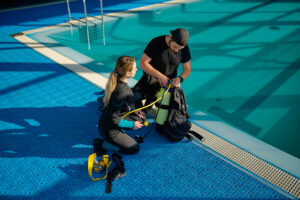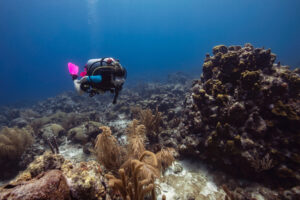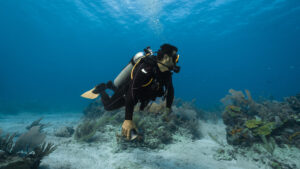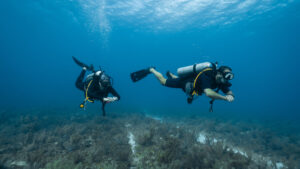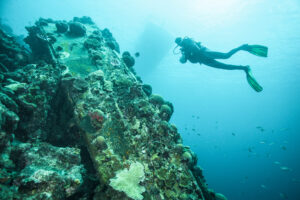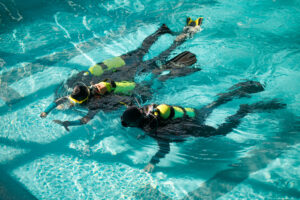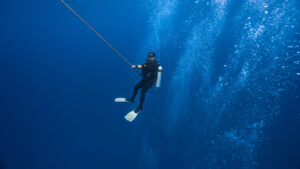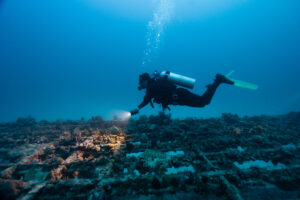What is a Weight Belt?
In the exhilarating world of scuba diving, buoyancy control is essential for a safe and enjoyable underwater experience. One of the fundamental pieces of equipment that assists divers in achieving optimal buoyancy is the weight belt. Designed to counteract the natural tendency to float while submerged, weight belts help divers maintain their desired depth and explore the underwater realm with ease. This article will delve into the history, types, and proper use of weight belts, as well as discuss alternative weight systems for those who prefer a more integrated approach.
History
Weight belts have been a staple of diving equipment since the early days of scuba diving. Before the advent of buoyancy compensators (BCs), divers relied solely on weight belts to control their buoyancy. With the introduction of weight-integrated BCs in the 1970s and 1980s, the need for separate weight belts diminished for some divers. However, many still prefer the simplicity and ease of use offered by traditional weight belts, particularly in specific diving situations.
Types of Weight Belts
There are several types of weight belts available to scuba divers, each with their advantages and disadvantages. The most common types are:
Nylon webbing belts
These durable belts are made from a thick, woven nylon material and typically feature a stainless steel or plastic buckle for secure fastening. Nylon webbing belts are popular due to their strength, durability, and affordability.
Rubber belts
Made from a thick, stretchy rubber material, these belts are more resistant to slipping and shifting during a dive. The elasticity of the rubber allows the belt to conform to a diver’s body, providing a comfortable and secure fit. However, rubber belts can be more expensive than their nylon counterparts.
Pocket belts
Pocket belts are equipped with pouches or pockets to hold individual weight pouches or blocks. These belts offer increased versatility in weight distribution and can be more comfortable than traditional belts with fixed weights. However, they can also be more cumbersome and may require additional maintenance.
Cummerbund-style belts
These belts are designed to wrap around the waist and secure with a Velcro fastening, providing a snug and comfortable fit. Often used in conjunction with a weight-integrated BC, cummerbund-style belts provide additional weight-carrying capacity for divers who require more ballast.
Weight Selection and Distribution
The amount of weight a diver requires depends on several factors, including body composition, wetsuit thickness, and the buoyancy characteristics of their equipment. In general, divers should use enough weight to achieve neutral buoyancy at the safety stop depth (typically 15 feet or 5 meters). To determine the appropriate amount of weight, divers can perform a buoyancy check at the surface, gradually adding or removing weight until they achieve the desired level of buoyancy.
Once the appropriate amount of weight has been determined, it should be distributed evenly across the belt. For most divers, placing the majority of the weight on the back of the belt provides a comfortable and balanced distribution. However, individual preferences and body shapes may necessitate adjustments to this general guideline.
Safety Considerations
Using a weight belt safely requires attention to detail and a commitment to proper maintenance. Divers should inspect their belts regularly for signs of wear and tear, such as fraying or damaged buckles. Additionally, it is essential to practice releasing the weight belt in case of an emergency. Divers should be able to remove their belts quickly and efficiently, both at the surface and underwater.
Alternatives to Weight Belts
For divers who prefer a more integrated approach to weighting, weight-integrated BCs offer a convenient alternative to traditional weight belts. These BCs feature built-in weight pockets or compartments, allowing divers to distribute their weight directly within the buoyancy compensator itself. This integrated system provides a streamlined profile and can improve comfort and stability underwater. However, weight-integrated BCs can be more expensive and may require additional maintenance compared to standalone weight belts.
Another alternative to weight belts is the use of trim weight pockets, which can be attached to various points on a diver’s gear, such as the tank strap or the backplate. These pockets allow for more precise weight distribution and can help divers achieve better balance and trim underwater. Trim weight pockets are particularly useful for divers who require additional weight beyond the capacity of their weight-integrated BC or who struggle with maintaining a horizontal position in the water.
Choosing the Right Weight System
Selecting the appropriate weight system depends on a diver’s individual needs, preferences, and diving conditions. In general, divers should consider the following factors when choosing a weight system:
Comfort and fit
The weight system should fit comfortably and securely around the diver’s waist, without causing discomfort or impeding movement. Divers should try on different types of belts and systems to find the best fit for their body shape and diving style.
Ease of use
Divers should be able to easily adjust and release the weight system, both at the surface and underwater. It’s essential to practice using the weight system in a controlled environment, such as a pool or shallow water, before diving in open water.
Adaptability
The weight system should be versatile enough to accommodate changes in diving conditions, such as varying wetsuit thicknesses or different dive environments. Divers should consider a system that allows for easy adjustment of weight placement and distribution.
Durability
The weight system should be made from high-quality materials and designed to withstand the rigors of regular diving. Regular maintenance and inspection are crucial to ensure the longevity of any weight system.
Key Takeaways
Weight belts have played a crucial role in scuba diving history and continue to serve as an essential piece of equipment for many divers today. By understanding the different types of weight belts, their proper use, and alternatives, divers can make informed decisions about the best weighting system for their needs. Whether opting for a traditional weight belt or a more integrated approach, achieving proper buoyancy is fundamental for a safe and enjoyable diving experience.

